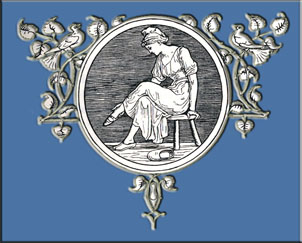

|
Once upon a time, there lived a widower who possessed an
-Giambattista Basile
|
|
The first tale to have the protagonist named Cinderella is
Zezolla makes a habit of going to her governess constantly saying
“If thou wilt do as I bid, I will become thy mother.”
Zezolla does as she is told, and the father, believing it was an
In this lowly state the stepmother and the stepsisters start to call
|
|
One day her father announces that he is going to Sardinia on
“I want nought, but that thou recommend me to the queenBefore heading home from Sardinia, the father does as Zezolla had asked, and receives from the fairy queen a date tree, a golden bucket, and a silken napkin. She takes great care of this tree, watering it with the golden bucket, and using the napkin to soak up the extra moisture. It’s not long till the tree is at its full height, and from its branches a fairy emerges, promising to fulfill all the child’s wishes.
|
|
One day Zezolla learns that the prince is going to throw a ball, and
When she gets there she meets her sisters, but they fail to know
The prince wishes to find this princess, and finds one of her slippers
Oh, what a banquet it was, and what joyance and amusements
Since none of the feet fit the slipper the prince wonders if
Commanding all his subjects to do her obeisance as their |
|
...continue on... and be enlightened to what hidden meanings lay within.
|
|
Fairy tales usually follow a pattern, and that is that they all focus
The first stepmother is envious of Zezolla’s charm. The governess,
“What the child really longs for is the love of her deadIn every Cinderella story, there is the dead mother, who represents the nurturing, loving mother that is present in infancy. The one that seems to always be there, and is always good to the child. Leaving infancy, the child is presented with what it believes to be unbelievably harsh circumstances. Mother leaves the child alone for what seems to be eternity, it must pick up after itself, and isn’t being treated as if it were the center of attention. And then, there is the problem of sibling rivalry, competing for the love of the child’s parents. The child will feel it is lacking something that the other siblings must have that it doesn’t, that somehow it deserves a lowly position.
Zezolla trades one “bad mother” for another, and then has the
The hearth, full of ashes, has a meaning all to itself. The hearth is
|
|
The tree, of which Zezolla takes such great care, with its connection
The tree and the fairy are there for the child for a while before
|
|
in the form of a tree, fairy, bird, or some other creature, is quite a common feature in Cinderella tales, and sometimes come they in combination, such as this story’s Tree and fairy.
|
In "Yeh-hsein," the girl has a large golden fish,
In "Rashin Coatie,"a Scottish variant, the girl |
|
“Cat Cinderella,” just like so many others, is a tale designed to
Then, when there is the great feast, banquet, or some other grand
The major flaw in this Cinderella, though, is that evil goes
|

| Click to go back to the "Cinder-who?" |

| Click to go indepth into the Grimm's "Aschenputtel." |

| Click to go indepth into Perrault's "Cinderella." |
